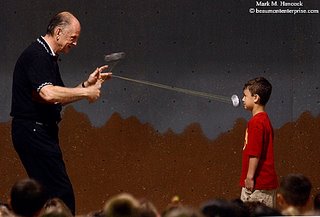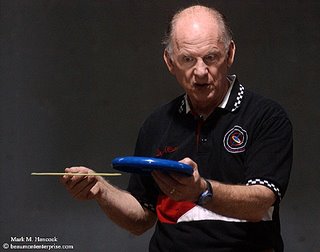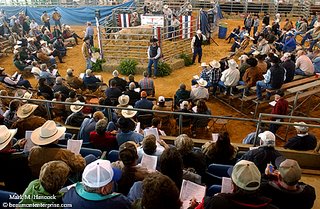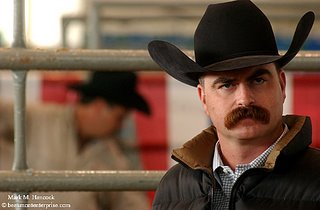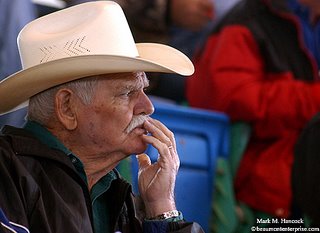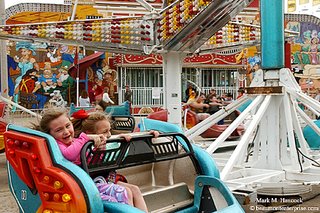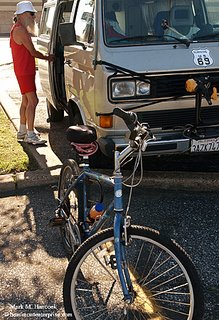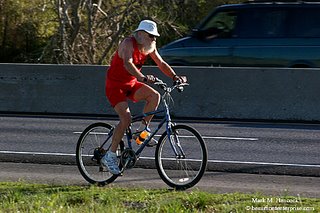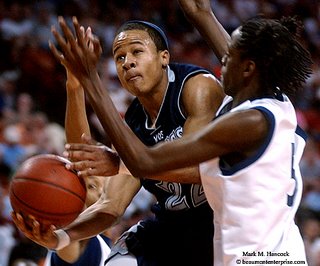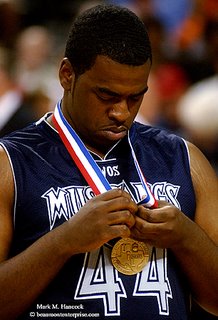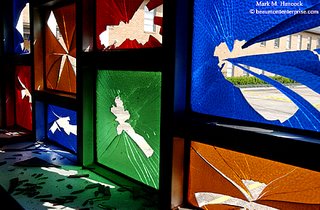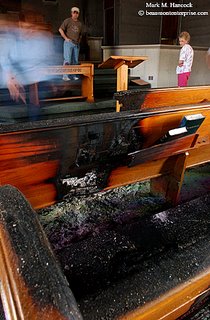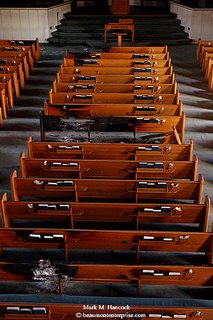We talked about the importance of making
full-frame images to concentrate on composition. We’ve also discussed
image skeletal structures. So, we should also discuss basic composition.
First, let's discuss the elephant sitting on the camera. Photography is a two dimensional art form. Photographs contain height and width. No matter how hard we try (I've tried almost everything), photos can't have depth or time.
Because most humans have two eyes, we must learn to see differently to report on a multi-dimensional world in only two dimensions. Once we understand and accept this limitation, we can work within the medium to create illusions of depth and make compelling compositions.
As for the element of time, this is what makes still photography so powerful. It can either capture one moment frozen in time or a timeless image. Both are strengths of this medium.
Thinking inside the boxEvery image begins with a rectangle (or square in some medium formats). What's included or excluded from this box can either be attributed to technical or artistic abilities of the shooter.
However, the first instinct is to catch visual goodies inside this box. We put mom in the box and click. We put friends in the box and click. Everyone does this at first. It's a natural part of the learning curve.
This phase of photography is subject driven and works like a scavenger hunt. We wander around collecting people, tree roots, trash, etc. Through this process, we learn about
photography basics: exposure, focus and timing.
If we manage to point our box in the right direction and collect everything we want, we call this a composition. It may be random, but it's still a composition. We composed the image when we fit something inside a box.
Much of the current "citizen journalist" trend ends here. This approach is subject based and applies no traditional rules.
To get beyond this level, we must first understand some formal compositional rules. Often composition becomes a matter of competing rules and choosing which one best fits the subject or a deliberate attempt to break a specific rule.
What's composition?Composition is the assembly of elements into a whole. In writing, it's the art of arranging words into sentences and applying grammatical rules. Photographically, it's an orderly arrangement of visual elements into an organized image with application of established rules.
Rules? We don't need no stinking rulesYes, I know, all photographers
love to break "rules." Fine, but don't do so in ignorance. PJs know the compositional rules and
then break them.
Who makes the rules? Painters, sculptors, architects and other artisans began making the compositional rules thousands of years ago. In more recent years, institutions such as RIT have studied the eye movements of subjects as they view photographs and more recently while the photographers are making images.
But let's not go too fast and bypass the foundation.
Composition isn't easyComposition is confusing. It isn't easy to understand because it's similar to a thousand people screaming in a room at one time. If they all scream the same thing at the same time, it's no problem. If they scream different things, it's hard to understand anything.
To make composition easier, try to visually limit the voices in the room or limit the message they scream. Either approach leads to a more organized and easily understood visual message as well.
Compositional elementsBefore we dive headfirst into composition, we must acknowledge compositional elements. From an artist's perspective, compositional elements are color, line, shape, texture, volume and tone. These are the building blocks of every image.
For PJs, compositional elements are generally considered as abstract terms to describe real-world objects. We don't see a set of lines, tones and volume. We see a bookshelf. However, since the camera only records the compositional elements of an object, we must learn how to approach different subjects as sets of compositional elements.
There are entire books dedicated to these six compositional elements. If readers understand them at this point, cool. If not, we'll get back to them later. Obviously, they're in every image we make.
Visual elementsVisual elements are distinct groupings of shapes, colors and tones. These elements can be arranged from different perspectives to make variations of a scene. A ball by itself is a visual element. An athlete by herself is a visual element. However, when a basketball player touches the ball, they become one visual element.
Likewise, when two separate elements align from front to back (from a camera position) they also become one visual element. This happens because cameras can't record depth.
These first two examples show the importance of keeping separation of items within the frame. As long as each item has its own space, it's considered separate.
Once a composition of key visual elements has good separation, other issues begin to appear. Frequently, these arise within one of the distinct elements.
A person's face is comprised of eyes, a nose, a mouth, ears, eyebrows and possibly a mustache or beard. Each of these has a distinct shape and is considered a separate visual element in a tight shot of someone's face. They are all shapes and can be arranged in different compositions upon the blank film plane.
Often, tone and color assist in the separation of elements. However, tone can override or complement the placement of visual elements. All silhouetted items near a similar plane are considered one item if the darkness of the silhouette connects them.
Contrary to this concept, an image element in a spotlight immediately separates from similar items. Again,
squinting at a scene lets PJs know if the tones are distinct or conjoined.
Luckily for PJs, visual elements can be blended or separated at different distances and apertures. We don't need to obsess over different colors of leaves on a tree unless we choose to do so.
Fast rulesI probably should break the following rules down to individual posts, but let's cruise through them and see if y'all bury me in questions.
Rule of thirdsThe rule of thirds is the most fundamental rule in photography. The rule dissects the image area into three equal parts laterally and vertically. The image is essentially cut into nine equal pieces.
The most important norm of this rule is keeping the area of subject interest on the four intersections of these lines. In other words, place the main subject off-center to create a more pleasing composition.
For a loose shot, a person's head could be placed on one of the four intersections (depends on which direction the subject is looking). For a tight shot, a subject's eye would be placed on the intersection.
Another generally observed norm is to keep horizon lines within the upper or lower third of the image area. This applies to general images. For landscapes, use the rule of fifths (see below).
Please see this
Photoshop Shape Tool tip to quickly learn this rule or apply it to preexisting compositions.
Rule of fifthsThe rule of fifths is similar to the rule of thirds. However, this rule is specifically for landscapes. This rule places a horizon line in the bottom or top fifth of the frame. Its goal is to emphasize either the sky or the landscape without distracting the viewer.
Rather than making the viewer choose whether the sky or land is more important, the PJ chooses the subject and eliminates the competing visual element. This allows the viewer to concentrate on the isolated subject (sky or land). If both are equally important, make two images. Don't allow them to fight for attention in one frame.
BalanceBalance is a state of harmony of visual elements within an image. It strives to create an equilibrium of tone, weight and shape within an image on both sides of a vertical or horizontal axis.
Balance applies to the totality of the image and how portions of the image fill the frame in a pleasing manner. Balance is not symmetry. An entirely symmetrical image is often balanced, but it's often boring as well.
If all the subject matter of an image is contained within one-half of the composition, it's considered off balance. Typically, a severe crop handles the problem, but it's better to fill the entire frame in the first place.
At this point, it's important to understand a frame can be "filled" with empty space. Balance is an aesthetic and subjective concept. Yes, it can be done mathematically, but it's often a matter of "feel."
As a starting point for balance, consider the frame as a teeter totter in a playground. Large items can be offset or balanced against much smaller items as long as there is enough space along a linear plane (think lever). The trick to balance is accurately placing an imaginary fulcrum within the frame.
For this abstract example, the element of balance compliments the element of volume (or weight) to find a pleasing visual compromise of space within the frame.
As a starting point, understand visual elements placed near the bottom or sides of a frame have more visual weight. Items placed near the top of the frame are considered lighter. This is why a helium balloon at the top of the frame appears balanced. Likewise, a large, heavy stone at the bottom edge of a frame appears more balanced.
To shake this concept further, the tones (lightness or darkness) as well as opacity of visual items give them weight and must be considered as well. In our previous example, balloons tend to be translucent and are frequently primary colors or white. Therefore, when used as compositional elements, they are considered light.
The stone from the previous example tends to be opaque with a dark color. Consequently, it would be considered heavy.
Unlike volume, tone can be reversed if dominant shapes within the scene dictate a different balance. For example, white stones against a black background still carry visual weight although the tonal weight is reversed. Likewise, black balloons against a white sky are still light because of the familiar shape and previous experience of the viewer and/or PJ.
If this is somewhat confusing, don't freak out. It makes sense while looking through an eyepiece.
Enough for now,




